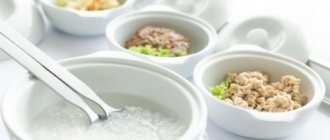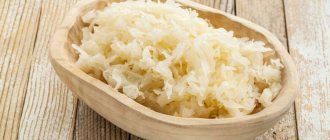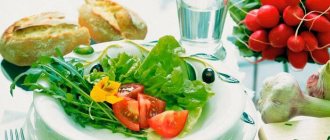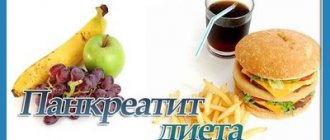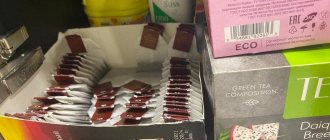Strawberries are a delicious, aromatic delicacy loved by many. Due to its properties, this berry is considered not only a valuable product, but also a medicine that has a beneficial effect on the entire human body. Strawberries are useful for pancreatitis if you follow some medical recommendations.
Due to its properties, strawberries are considered not only a valuable product, but also a medicine that has a beneficial effect on the entire human body.
Recommendations for choosing fruits and berries for inflammation of the pancreas
What fruits should you eat?
Some fruits are recommended to be included in the diet. The healthy fruits do not contain coarse fibers or aggressive acids. When consumed, there is no negative effect on the digestive tract, pancreas and mucous membranes.
The regular presence of such fruits in the menu allows you not only to replenish the supply of useful elements in the diet, but also to speed up the restoration of digestive processes.
Fruits that must be on the menu:
- bananas (increase vital energy);
- sweet apples (replenish vitamins, improve the functioning of the immune system);
- avocado (vegetable fat restores fat metabolism well in the body);
- apricots (contain a large amount of vitamins);
- watermelon (contains fructose);
- melon (prevents constipation);
- pineapples (improves the digestion process due to their protein content);
- feijoa (has a beneficial effect on the pancreas, contains B vitamins);
- peaches (improve immunity, contain vitamins of various groups);
- kiwi (contains vitamin D and C, replenishes the supply of nutrients).
What fruits should you not eat?
If you have pancreatitis, you should not eat fruits with a high content of aggressive acids. Such fruits can increase swelling of the pancreas tissue and provoke additional irritation of the mucous membranes. Fruits classified as prohibited foods should be completely avoided. They can provoke undesirable reactions from the digestive system even after heat treatment.
Prohibited types of fruits:
In the initial phase of exacerbation of pancreatitis (the first 1-2 days), the consumption of fruits and berries, as well as any other food, is strictly prohibited. Lemon;- pomelo;
- oranges;
- grapefruit;
- dates;
- persimmon;
- mango;
- figs;
- sour apples.
Recipes for delicious and healthy compotes
There are many variations of uzvars acceptable for use by patients with pancreatitis. Each recipe is good in its own way and provides certain benefits unique to it. You can prepare compotes from both dried and fresh fruits and berries, and you can also add one or more components to their composition, depending on the wishes of the sick person. Most often, nutritionists who prescribe for people suffering from frequent exacerbations of the pathological process occurring in the pancreas recommend several options for fruit and berry drinks, which I want to talk about.
Dried fruits compote
This type of uzvar can not only quench thirst, but also nourish the body weakened by disease with a large amount of microelements and vitamins that dried fruits contain. The best option for such a compote would be dry apple, pear and prunes.
Moreover, the plum component is not always included in the drink. It is necessary only when a sick person develops constipation due to pancreatitis.
It is not recommended to eat plums if your stool is normal or weak. In order to prepare a tasty and healthy compote from dried fruits, you can use the following recipe:
- Soak fruits or berries approved by your gastroenterologist for half an hour in a small amount of water. Usually these are apples, dried apricots, pears, prunes, raisins.
- Rinse all fruits with running water. This process only seems easy. In order to completely clean dried fruits from dirt adhering to them and chemicals used for processing before storage, it is best to use a brush.
- a handful of dry fruits are placed in a saucepan and poured with a liter of water,
- after boiling, reduce the heat to such an extent that the boiling of the liquid is barely noticeable,
- cook until tender for half an hour.
Place the prepared clean fruits in a saucepan and pour two liters of boiling water. After the uzvar boils, reduce the heat under it to a minimum, close the lid tightly and leave to infuse for 20 minutes. As mentioned above, you can drink such compote no more than two glasses a day.
Compote of dried apricots
Dried apricots, just like apricots, are dried apricots, but unlike the latter, they do not contain seeds. This fruit is recommended for patients with pancreatitis only in dry form, for preparing a vitamin drink.
Its preliminary preparation is carried out in the same way as for other dried fruits. After the dried apricots are completely cleaned, start cooking compote from them:
When drinking this drink, you need to remember one limitation - people with bowel problems, no matter constipation or diarrhea, should drink dried apricot compotes in the most minimal quantities. This warning is associated with the ability of the fruit to influence the activity of intestinal peristalsis, which provokes bloating, flatulence, diarrhea or, conversely, long-term retention of stool.
Dried apple compote
This drink is most often recommended for patients with a history of pancreatic inflammation.
Apple uzvar is considered easy to prepare, especially if it is prepared from independently collected and dried apples. The recipe itself used to prepare compote from these fruits is no different from those described above, so you should not focus on it. I would just like to say that a drink made from dried apples will be much more beneficial for the pancreas damaged by inflammation if you add a handful of raisins to it.
Fresh fruit and melon compote
This aromatic drink is the most popular among patients with pancreatitis. The only drawback of this type of uzvar is the possibility of preparing it exclusively during the melon ripening season. Fresh fruits for compote are taken in any composition from those approved by the attending physician. They are washed, peeled, cut into pieces and left to cook until softened. After the main fruit component is ready, chopped melon pulp is added to it, brought to a boil again and turned off.
Fruits and acute pancreatitis
In the first few days of the period of exacerbation of pancreatitis, the patient is recommended to undergo therapeutic fasting. All food products are prohibited, including fruits and berries. At the recovery stage of therapy, some of them are allowed to be introduced into the menu. The main condition is that to reduce the additional load on the digestive system, it is recommended to remove the skin from the fruit and extract the seeds.
To avoid unwanted reactions of the body, berries and fruits should be consumed after appropriate heat treatment (baking, adding to casseroles, making purees and other dishes or drinks).
List of healthy fruits and berries for acute process
Some berries and fruits, when consumed during the treatment of acute pancreatitis, can produce a therapeutic effect. For example, rosehip decoction or currant compote have a number of beneficial properties for the immune system, the digestive system and replenishing the supply of vitamins in the body. Berries and fruits are introduced into the diet in minimal portions (preferably after heat treatment).
Useful fruits:
- currant;
- rose hip;
- strawberry;
- raspberries;
- sweet apples;
- bananas.
The benefits of compotes for illness
Pancreatitis is a dangerous and tricky disease that forces the patient to resign from the existing diet for a long time and in some cases it forces him to follow a strict diet throughout his life. Avoid vitamin deficiencies caused by raw dietary restrictions; decoctions that use fresh or dried fruits and berries will help. These drinks, without overloading the iron damaged by the pathological process, can strengthen the patient's immune system. They require virtually no energy from the body to digest, and at the same time provide maximum benefits, which is why gastroenterologists react when asked by patients with whether to drink fresh or dried fruit compote in pancreatitis, almost always positive. Preferred properties of fruit drinks for a person with inflammation of the pancreas pharmacies
- reducing telogide by clearing it of toxins;
- Normalization of the functioning of the digestive organs;
- Excellent vitamin supplement for the body.
However, we must not forget that the benefits of drinking such drinks have a direct connection with their composition. Some berries and fruits are strictly contraindicated in pathologies of the gastrointestinal tract. Before adding fruit and berry compotes to your diet, consult your doctor about the suitability of these or other ingredients. This will help speed up the healing process and prevent complications of diseases caused by digestive disorders. An important principle is to avoid Uzvara suspension. Sugar in pancreatitis is very dangerous because it increases the production of insulin, so its content in blueberries and fruits is enough to prepare a tasty drink.
Fruits in remission
During the period of remission of pancreatitis, it is allowed to introduce more fresh fruits and berries into the menu. It is recommended to consult a gastroenterologist first. When consuming certain fruits, it is important to exclude possible allergic reactions (for example, to citrus fruits, red or orange fruits, specific types of berries).
Inflammatory processes in the pancreas can provoke an exacerbation of food allergies. The intensity of negative symptoms with a combination of such pathologies will be higher.
List of healthy fruits and berries during remission
Fruits that fall into the category of permitted foods during remission of pancreatitis not only do not cause harm to the digestive tract, but also provide benefits. The main condition for their introduction into the diet is gradualness and compliance with proportions. If there are too many of these fresh fruits in the diet, there will be a risk of abnormalities in the digestive processes (bloating, heartburn, flatulence).
Useful fruits:
It is forbidden to eat any food that increases the production of enzymes designed to break down food. persimmon;- watermelon;
- currant;
- pears;
- apricots;
- grape;
- peaches;
- blueberry;
- cherry.
Nutrient content and calorie content of garden strawberries
The calorie content of strawberries depends on the variety and the natural conditions for growing the berries. Calorie content depends on the liquid and carbohydrate content of the berries. It follows from this that sweeter varieties have higher calorie content. And also, if there was a lot of rain during the season and the berries contain a lot of water, then the calorie content of such berries will be lower compared to the dry period.
The average calorie content of 100 grams of garden strawberries (Victoria) is 41 Kcal
Calorie content of meadow strawberries and wild strawberries is 36-40 Kcal
Calorie content of 100 grams of strawberries - 41 Kcal
Nutrient content per 100 grams of garden strawberries (strawberries, Victoria):
Basic rules for eating fruits
For pancreatitis, it is recommended to consume berries and fruits during the main meal (with the exception of baked fruits, which can be used as a separate dish). If you introduce them into the menu on an empty stomach, the peristalsis of the intestines and gallbladder may increase (in case of cholelithiasis, this effect will provoke an attack of pathology). Dishes and drinks based on fresh fruits are recommended to be consumed warm (cold and hot options will cause additional irritation of the pancreas).
Basic principles:
- the introduction of berries and fruits into the diet for pancreatitis should be carried out with minimal portions (if after their consumption negative symptoms occur (flatulence, bloating, pain, nausea), then additional consultation with a gastroenterologist is necessary);
- fresh fruits are allowed to be consumed only during the remission stage (during an exacerbation, such products can provoke a deterioration in the patient’s health);
- to reduce the acidity in berries and fruits, it is recommended to subject them to heat treatment (baking, steaming, boiling);
- You cannot introduce several types of berries or fruits into your diet at the same time (a gradual expansion of the menu will reveal the cause of undesirable reactions from the digestive system);
- if the fruits are included in the category of healthy products, but there is an allergy to them, then they should not be consumed under any circumstances (exacerbation of food allergies will increase the intensity of the symptoms of pancreatitis).
The right choice when buying in a store
For pancreatitis, you can only eat ripe fruits and berries. Unripe fruits have increased levels of coarse fiber and aggressive acids. These substances have a powerful irritant effect on the digestive organs. Eating them can not only worsen the patient’s health, but also provoke an acute attack of the inflammatory process within a short period of time.
Basic recommendations:
- the fruits must show no signs of rotting or mold;
- any damage to the skin is unacceptable;
- the color and size of the fruit must correspond to the standard description;
- canned berries and fruits should not be consumed in case of pancreatitis due to the excessive glucose content in such preparations;
- It is recommended to eat fruits grown independently (such fruits and berries will not contain harmful substances).
Pre-preparation of fruits
Fresh fruits are allowed to be consumed during pancreatitis only in the remission stage. In addition to the standard stages of preparing fruits for consumption, it is important to follow additional rules. When first introduced to the menu, fruits must be subjected to heat treatment (cooking, baking). When preparing compotes, it is recommended to drain the water after boiling and add new water.
Required steps:
- Thorough rinsing with water and removing all contaminants;
- The skin must be removed from the fruit (it contains a large amount of coarse fiber and accumulates chemicals);
- seeds and veins also need to be removed (when digested, they create additional stress on the digestive tract).
With positive dynamics, the diet is gradually expanding, supplemented with a variety of fruit and berry mousses, puddings and jellies.
Fruit juice recipes
To prepare fruit juices, you can use only approved varieties of fruits. You can use a juicer or a regular grater (in the second case, the juice is squeezed out of the pulp). Such drinks for inflammation of the pancreas should be consumed in a diluted form (in a 1:1 ratio).
Some fruit juices can be supplemented with carrot juice (the beneficial properties will increase significantly).
Apple juice:
- To make juice, you can use a juicer, meat grinder or grater.
- When using a grater and a meat grinder, the juice is squeezed out of the resulting apple mass (using gauze).
- When preparing apples, you need to wash them, remove the skin and seeds.
- For pancreatitis, apple juice should be consumed diluted (can be diluted not with water, but with carrot juice).
- It is recommended to choose apples for the drink from non-acidic varieties.
Pineapple juice:
- The pineapple must be peeled and the pulp cut into small pieces.
- A juicer, blender or meat grinder are suitable for making the drink.
- It is better to strain the juice through cheesecloth.
- Before drinking, the drink must be diluted with boiled water.
Watermelon juice:
- Watermelon juice is most easily prepared using a blender or juicer.
- The drink does not need to be filtered or diluted.
- You can make melon juice in a similar way.
Video on the topic: Diet for pancreatitis and cholecystitis.
Recipes for berry fruit drinks for pancreatitis
Berry fruit drinks for pancreatitis are introduced into the diet according to certain rules. First, the drinks are first made from one ingredient. Secondly, you can consume fruit drinks only ten days after the attack of the disease has stopped. Thirdly, only berries that are included in the list of permitted products can be used to prepare drinks.
Cranberry juice:
- To prepare two glasses of the drink you will need a glass of cranberries, 700 ml of water and 50 g of sugar.
- It is recommended to crush the berries first.
- Pour water over the cranberry mixture and put it on fire.
- After ten minutes you can add sugar.
- After preparing the fruit drink, it is recommended to strain it.
Cranberry juice:
- To prepare the drink you will need 3 liters of water, 500 g of berries, 5 tablespoons of sugar.
- At the stage of preparing the berries, they must not only be washed, but also filled with warm water for fifteen minutes.
- It is recommended to soften the fruits (you can pass them through a sieve).
- Combine cranberries and water, bring to a boil (sugar can be added only when the mixture boils).
- If the drink turns out to be too concentrated, it should be diluted with water.
If there are no scales in the kitchen
If you don’t have scales in the kitchen, and you don’t know how to measure the required number of berries to prepare any dish, then using the pictures, you can determine the approximate weight of garden strawberries (Victoria, garden strawberries), meadow strawberries or wild berries:
Garden strawberries (Victoria) 1 kg of berries - 1.5 liters + almost a full glass; 1 liter - 600 grams of berries; In a 0.25 liter glass there are 135 grams of berries. Meadow strawberries 1 kg of berries - 2.5 liters; 1 liter - 400 grams of berries Wild strawberries 1 kg of berries - 2.5 liters; 1 liter - 400 grams of berries
Benefits and harms
Rich in vitamins and beneficial nutrients, compotes help:
- improve metabolism;
- remove toxins;
- reduce inflammation;
- normalize blood circulation in the organs of the digestive system;
- relieve pain;
- tame vomiting;
- normalize the flow of bile;
- reduce the production of pancreatic enzymes;
- enhance the regeneration of damaged tissue structures of the organ.
Many patients ask whether this means that compote is a panacea for pancreatitis.
This is wrong. Excessive drinking during the acute period of the disease can worsen the patient's condition.




